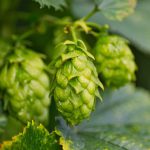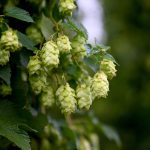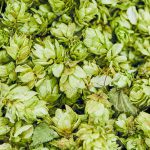In recent years British hops have become an increasingly scarce commodity. As such it is vitally important that those remaining hop yards get constant care and attention in order to maximise crop yields and produce the finest quality hops. With around 2 months to go before harvest Will Kirby takes a quick look at the condition of this year’s hops on Brook House Farm in Bromyard, Herefordshire.
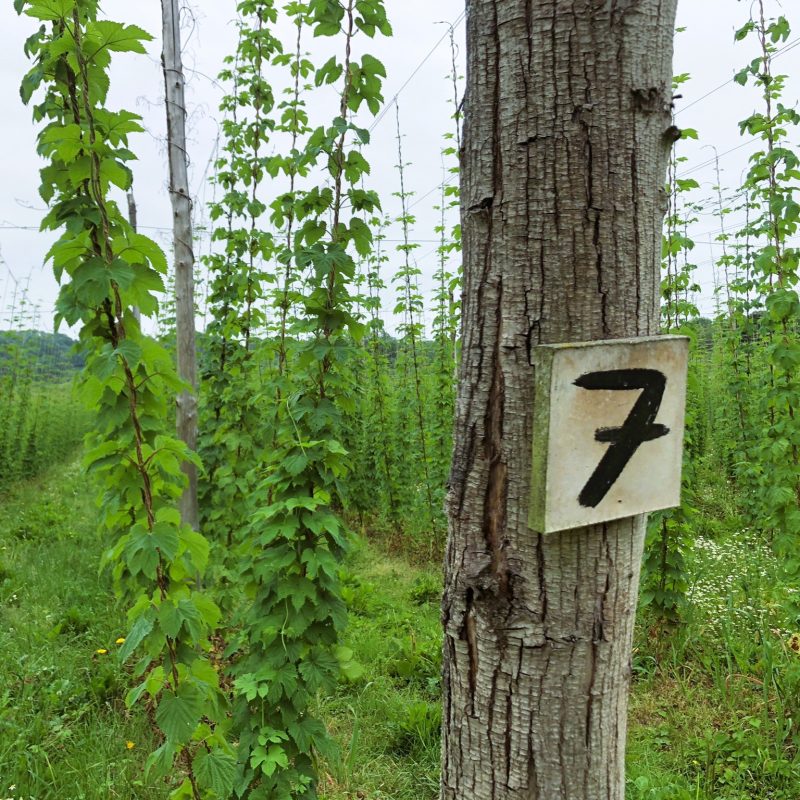
“We have just passed the summer solstice in the northern hemisphere. This is a key time for hops – they undergo a hormonal change as the days get shorter, which triggers the beginning of lateral growth and cone formation and puts us, growers, on the countdown to harvest.
It is also the time when growers can get early indications of how the crop will weigh: how the vagaries of pests, diseases and the weather might influence yield.
Will we have enough water?
So far in 2022 we have seen pretty good weather for hop growing. February and March were abnormally dry which meant it was possible to get out onto the land, working the hops while avoiding soil damage and compaction. The majority of hops in the UK are not irrigated though – and farmers depend on this ‘bank’ of water underground in the soil to get the plants through the summer and into harvest. So far there has been sufficient rainfall through early summer to keep the crop in rude health. It is probable though that more rain will be needed if the current good health of the UK’s hops is to be maintained.
Pests, diseases and predators
Thankfully there have been no big shocks on the pest/disease front. Susceptible varieties did show some downy mildew early in the season – and we have heard stories of isolated powdery mildew outbreaks, but pest pressure has been fairly limited (touch wood!). We continue to investigate ways to minimise our environmental impact on the land and have been doing some trials with external researchers on beneficial predators.
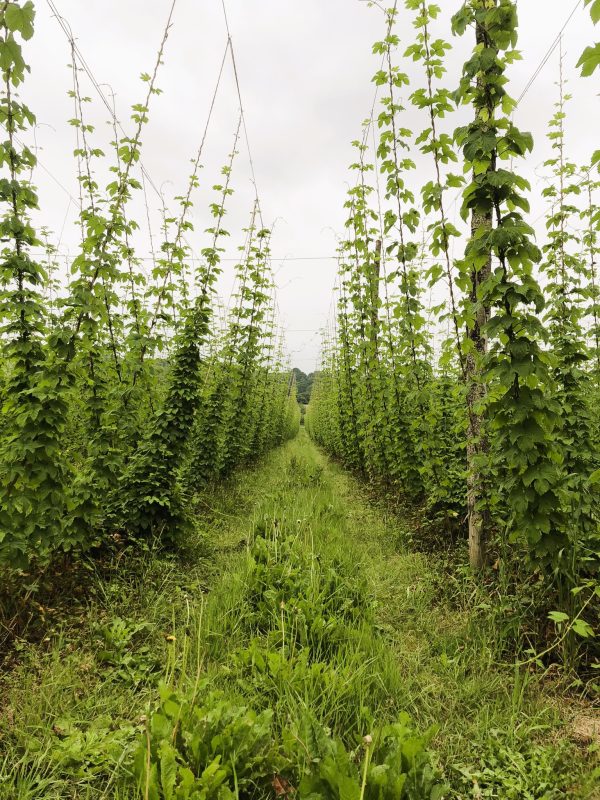
Varietal performance
At a variety-specific level, it looks like Bramling Cross (one of the more scarce UK varieties) is bucking the trend by looking a little light.
Later harvested hops like Admiral are a week or so ahead of expectations and look more robust.
Challenger and Fuggle remain difficult to grow from a disease perspective – these plus Bramling Cross are likely to be in the shortest supply over the coming year. Goldings – which is the most widely grown UK variety – looks to be in good health.
Price inflation pressures
More broadly, hop growers (like farmers of other crops) are dealing with huge increases to inputs; particularly fertiliser. This is primarily due to the situation in the Ukraine. We continue to work on using inputs as efficiently and gently as possible, but as recent work by the British Hop Association has shown, growers are an overall cost increase of over 10% year-on-year. Malting barley price increases are being passed on to customers. The supply-demand balance will determine what happens to hop prices in coming years and certain varieties are likely to be short in short supply. As ever the best way to protect against availability and pricing risks is to contract for your hop needs.
We have a limited amount of uncontracted supply from the ’22 US and UK crops – do get in touch.
Worldwide growing conditions
The two largest hop-growing regions in the world are the Hallertau in northern Bavaria, and the Yakima Valley in the Pacific North West. Similar to the UK, German growers are reporting a relatively dry spring but relatively benign conditions since then. Temperatures meanwhile in Yakima have been abnormally cold until very recently.
This is a relief on two fronts: in late June ’21, a series of days regularly exceeding 45 °C were too hot for hops to photosynthesise effectively – additionally colder temperatures mean that the ‘snowpack’ in the mountains above Yakima still have plenty of water meaning there won’t be risks to irrigation this year. However, hops do need some hot weather to develop fully, and to hit the high oil levels that brewers are after. Fortunately we have had some warmer days in the last week or so.”



